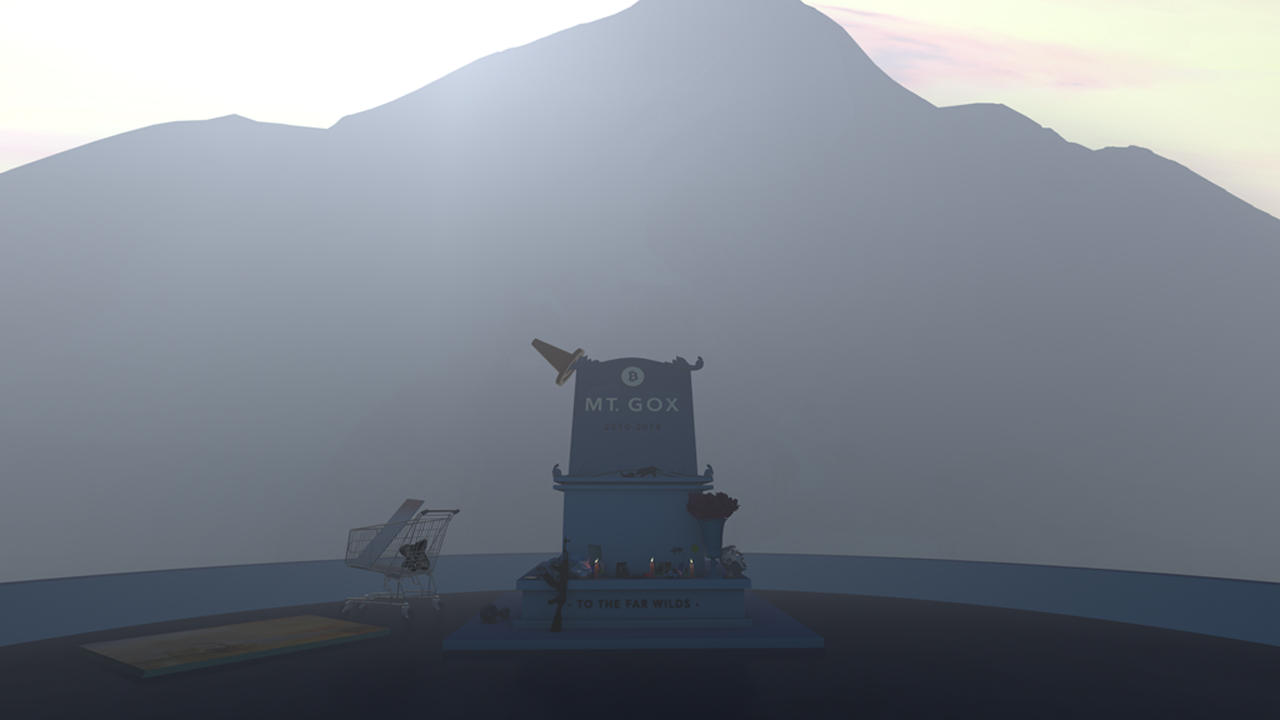“I created Mt. Gox as an actual landscape,” artist-render LaTurbo Avedon tells ANIMAL. “People can submit media to place it at or on the shrine.”
Avedon is an artist-render who exists only in on social media, Second Life and other interactive digital platforms that she chooses to inhabit. This is her first show at the online project space Webspace.Gallery.
By now, we’re used to communicating with LaTurbo without any need to tether her identity to someone’s specific bundle of physical flesh, offline somewhere. We’ve discussed her digital sculpting process, watched her dance around, attended the physical opening of her art show in Brooklyn (the artist was present via monitor) and hell… ok… drunk-messaged on Facebook for a few hours. This is an accessible if not common suspension of belief; LaTurbo doesn’t have to “exist” to exist.
Of course, the unfortunate customers of bitcoin’s oldest exchange feel differently about their money’s “existence.” The Tokyo-based crypto-currency exchange crashed suddenly last month, declared bankruptcy after loosing $520 million worth of bitcoin to security flaws, malware and hackers.

Mt. Gox also knowingly traded in nonexistent currency. Today, the previously shut down site had re-appeared, allowing users to log-in and check out the balances of their digital wallets, along with this less-than-comforting disclaimer:
Please be aware that confirming the balance on this site does not constitute a filing of rehabilitation claims under the civil rehabilitation procedure and note that the balance amounts shown on this site should also not be considered an acknowledgment by Mt. Gox of the amount of any rehabilitation claims of users.
It seems that Mt. Gox is still dead. And so, “Avedon has erected an equally virtual monument to Mt. Gox,” the gallery announces.
For the duration of the exhibition, visitors to webspace.gallery are encouraged to anonymously submit images and 3D objects to be left at the monument on their behalf. Every second day, new renders of the monument will be uploaded, showing the various acts of vigil, or vandalism requested by visitors. A video of the monument will be uploaded on April 14 to document the end-result of this month-long process.
“All the things people send will accumulate,” LaTurbo explains. Since launching the project over the weekend, visitors have already stopped to drop off artwork and other digital tokens.

“It looks like some sort of Vierkant-esque gradient panel and a Turner painting,” LaTurbo observes in her latest render.
You too can “leave something at Mt. Gox” — an image (“a high-resolution image to be placed on or near the monument as print”), an object (“.obj files are accepted and will be placed on or near the monument as a physical object”) or a sticker (“.png files will be used for surface markings on or near the monument”).
You can also leave a carving (“single-colour handwritten notes will be carved into the monument’s surface”). This could technically function as graffiti. Now, who wants tag Mt. Gox’s tombstone?

(Images: LaTurbo Avedon)



